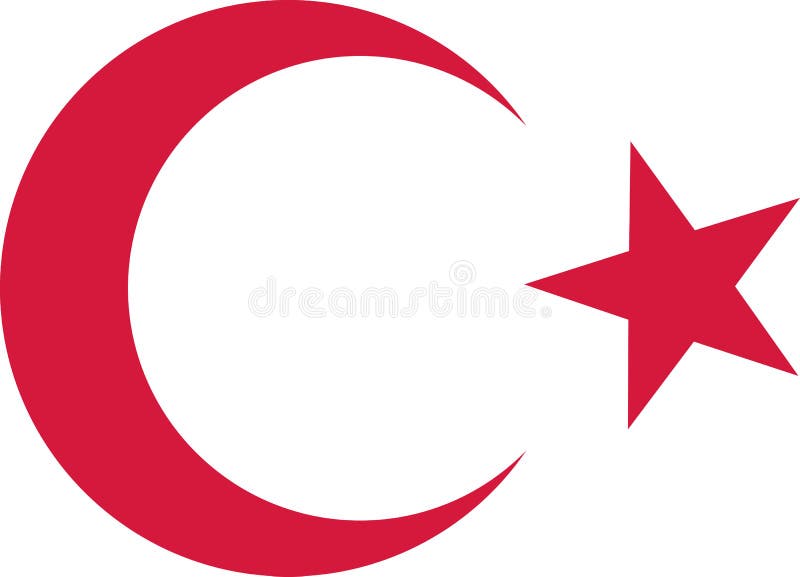
The same symbol was used in other national flags introduced during the 20th century, including the flags of Azerbaijan (1918), Pakistan (1947), Malaysia (1948), Singapore (1959), Mauritania (1959), Kashmir (1974), Uzbekistan (1991), Turkmenistan (1991) and Comoros (2001). Other states formerly part of the Ottoman Empire also used the symbol, including Libya (1951–1969 and after 2011), Tunisia (1831) and Algeria (1958). The Ottoman flag of 1844, with a white ay-yıldız ( Turkish for "crescent-star") on a red background, continues to be in use as the flag of the Republic of Turkey, with minor modifications. It rose to prominence with its adoption as the flag and national symbol of the Ottoman Empire and some of its administrative divisions ( eyalets and vilayets) and later in the 19th-century Westernizing tanzimat (reforms).


The combination is found comparatively rarely in late medieval and early modern heraldry. In numismatics in particular, the term crescent and pellet is used in cases where the star is simplified to a single dot. The star, or Sun, is often shown within the arc of the crescent (also called star in crescent, or star within crescent, for disambiguation of depictions of a star and a crescent side by side). Coins with crescent and star symbols represented separately have a longer history, with possible ties to older Mesopotamian iconography. It has been suggested that the crescent actually represents Venus or even the sun during an eclipse. Both elements have a long prior history in the iconography of the Ancient Near East as representing either the Sun and Moon or the Moon and Venus (Morning Star) (or their divine personifications). The symbol is the conjoined representation of a crescent and a star.

It is the nearest equivalent in the classical languages to what we call a flag today.

Vexillology as a word is derived from the Latin vexillum, a term used by the Romans to refer to a kind of standard with a fabric hung from a horizontal crossbar on a pole. Vexillology seeks to understand and explain the important part played by flags in the modern world. It is concerned with research into flags of all kinds, both modern and historical, the creation of a body of practice for flag design and usage, and of a body of theory of flag development. Vexillology is the scientific study of flags and related emblems.


 0 kommentar(er)
0 kommentar(er)
